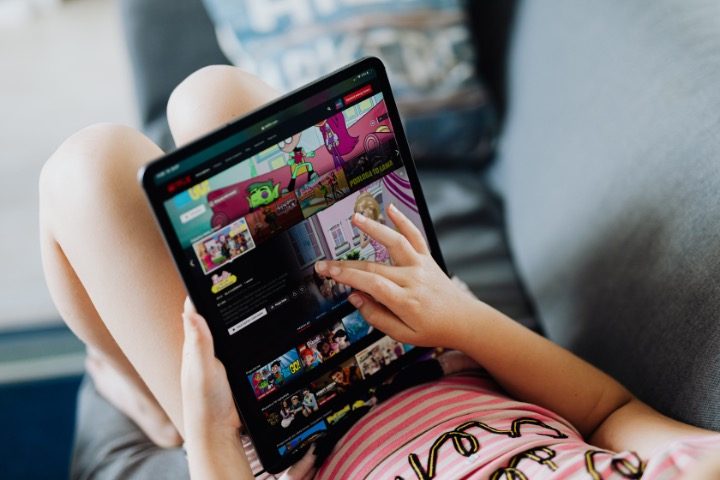
While TikTok has become the subject of scrutiny and controversy due to its ties to the Chinese Communist Party and the danger that relationship represents for Americans’ privacy and sensitive data, there is another important consideration about prolonged TikTok use that is drawing attention: the risk of developing “TikTok Brain.”
TikTok Brain, as a new report by The Wall Street Journal notes, is a term some researchers are now using to describe the shortened attention span conditioned by the short, super-stimulating video format of TikTok and related platforms such as YouTube Shorts.
John Hutton, director of the Reading & Literacy Discovery Center at Cincinnati Children’s Hospital, described TikTok as a “dopamine machine” that trains the user’s brain to continuously seek the stimulation of scrolling through the reels found on the platform.
“A flood of dopamine reinforces cravings for something enjoyable, whether it’s a tasty meal, a drug or a funny TikTok video,” the Journal wrote, adding that this brain conditioning makes it difficult for people, particularly young people, “to participate in activities that don’t offer instant gratification.”
Even those who don’t use TikTok specifically are exposed to the tendencies that create TikTok Brain, as the format TikTok popularized — that of being able to scroll an endless series of highly stimulating videos with the mere swipe of a finger — has been adopted by nearly all the major social media platforms, from YouTube to Facebook to Instagram.
Speaking to Bustle, neuropsychologist Sanam Hafeez described it in the following words: “When you scroll and hit upon something that makes you laugh, your brain receives a hit of dopamine,” and “when you see something you don’t like, you can quickly pivot to something that produces more dopamine.”
As Breitbart News reports:
Continuing this behavior could eventually train a person’s brain to crave the rewards they get from taking in short content. A recent study published by Guizhou University of Finance and Economics in China and Western Michigan University suggests that TikTok videos and similar YouTube Shorts engage users via “short bursts of thrills,” which can even develop addictive behavior.
Moreover, a 2019 study published in Nature Communication reportedly suggested that our “collective attention span” appears to be narrowing due to how quickly people consume content on social media.
This causes a problem when an individual attempts to engage in an activity, such as reading, that requires focusing for an extended period of time. Such prolonged focus is known as “directed attention” and makes use of the prefrontal cortex, the part of the brain in charge of impulse control and decision-making.
Young people whose brains are in a state of development, and are thus more impressionable, are being encouraged to “grow used to and even prefer these kinds of highly stimulating fast scene shifts,” says Gloria Mark, author of the book Attention Span: A Groundbreaking Way to Restore Balance, Happiness, and Productivity.
Speaking to Wired, Mark explained that there are “so many forces banding together that are just reinforcing people, especially young people, to have short attention spans.”
Among the factors causing TikTok-style content to shorten the attention span of users is not only the shortness of the content and the ease with which one can scroll from video to video, nor the fact that the platform feeds users a never-ending stream of content (reinforcing the addictiveness of it), but also the nature of the content.
Platforms such as TikTok and YouTube Shorts encourage loud, raucous, simple, absurd, and shallow videos to rise to the top of the algorithm, becoming the most shareable and the most likely to go viral.
While watching too much television is also unhealthy, TV shows at least have some advantages over the kind of content that has become the norm on social media. Television programming has plot, characterization, and moral dilemmas, and can portray virtues such as heroism, patriotism, and courage.
On TikTok, however, what rises to the top of kids’ watch lists is fodder for the lowest common denominator: People dancing ridiculously to the latest hit pop song, pulling crude pranks on one another, or performing ridiculous dares. There is nothing instructive, educational, or elevating about it.
And the aforementioned saving graces of television programming apply more to the shows of yesteryear. Nowadays, to keep up with the competition from social media, children’s television has largely embraced characteristics of TikTok: Loud noises, shouting, randomness, and crude humor that destroys viewers’ attention spans.
When TikTok has been in the news, it has usually been in relation to the fact that its parent company, ByteDance, is linked to the Chinese Communist Party, and makes the data of its users available to the Chinese government — a clear national security threat.
New York City this week banned TikTok on phones issued to municipal employees, joining the federal government and the majority of states in doing so.
But while the security and privacy risks are significant, the effects the app has on the minds, behavior, and intellectual capacities of our nation’s youth are just as concerning.




